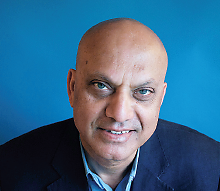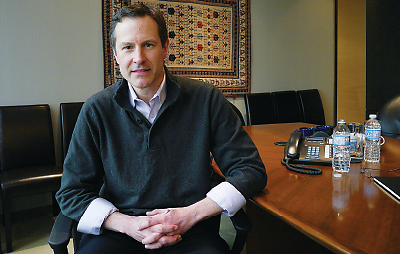In Canada, the TRAM Drives Innovative Youth Services
Abstract
A public-health research agency and a private foundation set out to catalyze fundamental change in youth mental health care in Canada in five years. After an 18-month process, a proposal to achieve that end is selected.
Applying for research grants usually means sending a painstakingly sculpted and polished proposal into the maw of some funding organization and waiting in the dark for approval or rejection.
However, two Canadian organizations decided to collaborate on a different, less mysterious way to make that do-or-don’t decision. Their goal was to make “a real difference in improving mental health outcomes for young people in Canada within five years,” and their method was a blend of collaboration and competition.
The Canadian Institute for Health Research (CIHR, Canada’s equivalent of the National Institutes of Health) set the process in motion, offering $12.5 million toward a strategy for patient-oriented research, to be matched with private funds.
So Transformational Research in Adolescent Mental Health (TRAM) was launched under Canada’s Strategy for Patient-Oriented Research, a coalition of patients, researchers, industry, health care providers, and decision-makers seeking to more closely integrate research into care.
On the private side, the Graham Boeckh Foundation decided to fund the entire matching amount, bringing the total to $25 million, said foundation Chair J. Anthony Boeckh, Ph.D., in an interview with Psychiatric News. The foundation is named for Boeckh’s son, who died in 1986 from complications arising from treatment of schizophrenia.
Both CIHR and the Boeckh Foundation were dissatisfied with the gaps between existing research and clinical practice, said Boeckh. “We wanted to change the process of selection and peer review.”
Change it they did, but the TRAM process took time.

“The goal of ACCESS Canada is to improve early case-identification rates, youth engagement, rapidity of access to services, mental health outcomes, and satisfaction with services received,” said McGill University’s Ashok Malla, M.D.
A request for applications went out in January 2013, and the winning proposal—ACCESS Canada—was led by Ashok Malla, M.D., director of the Prevention and Early Intervention Program for Psychoses at the Douglas Mental Health University Institute and the Canada Research Chair in Early Psychosis at McGill University.
The original submissions were screened not by the traditional cohort of anonymous peer reviewers, but by a panel composed of scientists, mental health clinicians, policy experts, patient and family representatives, and young people who have experienced mental health issues. That round left 17 proposals (“networks,” in TRAM terminology) that were examined in a “strengthening workshop” held for three days in June 2013.
The workshop was not simply an exercise in prioritizing and eliminating applications, however. Representatives of each network were in the same room at the same time; members of the Selection Committee were also there to mentor and provide guidance. “Committee members were not there to micromanage, but to encourage the networks to think outside the box, a critical component for transformational research,” said Boeckh. “People were talking with each other who had never talked before.”

“Everyone walked a tightrope between collaboration and competition,” said James Hughes, president of Montreal’s Graham Boeckh Foundation, about the inner working of the Transformational Research in Adolescent Mental Health (TRAM) program.
“They were able to meet other people doing similar work across Canada,” said James Hughes, president of the Graham Boeckh Foundation. “That led to a better understanding of each other’s proposals, thereby going a long way to overcoming the natural silos in the sector.”
The workshop thus had some aspects of an open-air bazaar. Networks didn’t merely exchange information but also shopped about for potential new partners, new proposal elements, and new research capacity. Ideas and networks merged. “We were surprised and pleased at how open each group was to negotiate its proposals with others,” said Hughes.
The 17 networks reassembled themselves into nine or 10 groups by the end of the workshop, and a selection panel whittled those down to three semi-finalists. Each of those networks then received $25,000 to prepare final proposals to be screened by the selection panel.
“This project is very exciting and a great opportunity for Canada,” said Howard Goldman, M.D., Ph.D., a professor of psychiatry at the University of Maryland School of Medicine, who served on the selection panel.
In theory, such a process might be possible in the United States, said Goldman, who is also chair of APA’s Health Care Reform Strategic Action Work Group . “But it would be harder to import because of our divided payment system.”
The winning network, ACCESS Canada, will focus on early case identification; rapid, easy access for youth through primary care, schools, and drop-in centers; and referral to appropriate, existing mental health professionals, said Malla in an interview.
Malla chose varied sites for the network across Canada—about 10 centers located in six provinces and two territories. The sites were chosen to capture a mixture of urban, rural, and Aboriginal people, with the goal of identifying best practices that will work throughout the country and take into account different practice settings.
The network will roll out the program sequentially, allowing the sites opening later to serve as controls for six months or a year.
Program monitoring will include provisions both for tracking the project and for modifying it should it be deemed appropriate, said Hughes.
“I’ve learned a lot in the last 18 months,” said Malla about the TRAM process, especially from the involvement of the target population. Young people were involved along the way, both on the competing network teams and on the selection panel.
“They told us they wanted to be partners in the process,” said Malla. “I was impressed at how informed they were, based on their own experiences.”
Would he go through the same process again?
“Ask me in two years,” he said. “We’ll learn from our experience as we implement the research plan.”
Stanley Kucher, M.D., whose team was one of the three finalists, noted that lessons gleaned from the TRAM process will be helpful not only for possible future competitions but also for the grant-awarding process in general.
“I think everyone learned through this process,” said Kutcher, a professor of psychiatry at Dalhousie University in Halifax, Nova Scotia. “As with any new approach, there will be a lot of lessons learned to discuss. I hope there will be an opportunity for CIHR, Boeckh, and key individuals to debrief and talk about the components of the process and what worked well and what was lacking that might be considered for the future. I think that we will be able to comfortably look back and say that this kind of approach has a better probability of moving the yardstick forward for achieving better mental health care for youth in Canada than a traditional CIHR approach would have.”
The grant-award process in general, he observed, “is a little bit like boating. The first boat past the post wins. Is there a place for not having the first-past-the-post win? Is there a place for taking the very best of a number of proposals and trying to knit those pieces together in a cloth that is more robust than any of the pieces on its own?”
He emphasized that participating in TRAM was not about winning. After weighing the amount of time and effort that participation in the competition would require, he and his team “saw TRAM as an opportunity to put our team’s best collaborative ideas forward from years of research, clinical, administrative, and policy experience as part of the way to way to reach the goal of transforming mental health care for the young people of Canada.”
Expounding on the collaborative foundation of TRAM, Kutcher noted that “the three finalist teams are made up of outstanding people, and I’m hopeful that as the process moves ahead, Dr. Malla and his team will look at components of the two runner-up proposals and consider whether parts of them would enhance their program.” ■
More information on TRAM can be accessed here.



